Love Hina Manga (1998) Review: A Dose of Silliness for Patient Readers
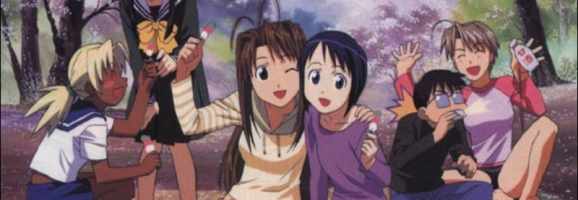
The harem genre in anime is something which has been beaten into the ground and then resurrected every season. It refers to the often comedic story of one man surrounded by many women and his perverted mishaps. It takes an addictive love triangle and expands it into something absurd and chaotic. It is difficult to pull off well, and once you’ve dipped your toes in it is difficult to find another which stands out. Love Hina by Ken Akamatsu has been a major gateway title over the past decade for those who caught it in its glory days of 90s, and those whom discovered it afterwards in their public library or local comic book shop. The manga sold over sixteen million copies in Japan alone and has been reprinted in English multiple times. Since the 90’s harem stories have evolved to include maids, witches, wizards, demons, animal-hybrids, Gods, co-workers, groups of twin sisters, high school students and even a guy who gets too excited by his situation. Now the craze has come and gone, the manga is considered without a doubt the superior version of Love Hina.
If this is your first time hearing of Love Hina you may be baffled as to what it is about. It tells a sweet tale of 19-year-old Keitaro Urushima, whom after getting kicked out of his house for failing Todai (Tokyo University) exams twice, seeks refuge in his Grandmothers old Inn. He discovers in terror that since his last visit the dormitory welcomes women only. Those who love a good, silly romance like Bridget Jones’ Diary (2001) or Notting Hill (1999) will find the fuzzy goo never-ending here. I mean that literally. Clocking in at fourteen volumes, the simple premise is stretched a little too thin. Even in the manga there are scenes that don’t service the plot, characters or the entertainment factor. After the hundredth panty shot the more serious plot points become overdone too. Is Keitaro going to give up or not? Are the girls actually going to kick him out this time? When will the girls just leave him alone? A lack of a compelling storyline has often been the flaw with the romantic comedy genre in general, but there’s a reason there hasn’t been a TV series based off Music & Lyrics (2007), although they did make that horrific show (2009) based off the classic 10 Things I Hate About You (1999).
That being said, it is insanely difficult to pin point an exact chapter to remove. Despite Love Hina’s stupid repetitiveness of long running sit-com standards like That 70’s Show (1998) it manages to link the story together in such a way it’s hard to drop the bomb. Within its pages there are a number of different stories taking place. The strongest arcs are the ones concerning Keitaro’s goal of attending Todai, the connection between Mutsumi, Naru and Keitaro and the romance between the two leads, as they flip between love, hate and eventually settle on one decision. Once these arcs are resolved in volume eight, or twelve if you’re stretching it, there’s at least three volumes of the story left. In the remaining volumes most of the material can go, even if there are fleeting memorable moments in them.
Love Hina is frustratingly charming one moment and tedious the next, like an abusive relationship you can’t break away from. A pleasant surprise is a beach trip which resolves a conflict between Naru and Keitaro, although it does have a useless theatre performance by the Hinata girls in the same section. One of the most poignant scenes in volume 2 is when Keitaro leaves for the first time. Naru finds Keitaro reminicing in the snow in front of Tokyo University and offers him a warm return. When Love Hina isn’t touching, there are ridiculous, eccentric yet charming quirks, like the token cute animal (a Turtle in this series), the idea of Turtle-language and Seta’s van which always appears out of nowhere. There are also funny moments, for example, one of the times when Keitaro tries to confess his love to Naru, she is trying to run away from him. Unknowingly to him, she is trying to discreetly find a remedy for diarrhea and a fever.
It would be wrong of me to write about manga without addressing the artwork itself. The character designs are generic by now, but still hold some charm in their 90’s aesthetic of fairly small eyes, and Ash Ketchum-esque lines underneath them. Naru Narusegawa provides the model for many female leads to come in anime. Eclair from Kiddy Grade (2002) and Kaname from Full Metal Panic (2002) share striking similarities. The characters are realistically proportioned, have a variety of nicely detailed clothing, and plenty of eye candy for when there is little to no clothing. The beauty of the artwork shines in volume and chapter cover art and stands above many of its genre. In terms of layout Ken Atumatsu often likes to cram as much on a page as possible, so Love Hina comes across more like a traditional comic with panels than some of the more artistic endeavors of manga-ka(CLAMP). This hurt my eyes at first, but only takes a chapter or two to adjust to. In other words, the artwork is good, but the presentation and layout of the artwork varies in quality.
Generally speaking harem usually have a set of character types: the quiet one, the loud one, the promiscuous one and the little kid. Whether those stereotypes started here or somewhere else remains to be seen. While the cast comes across as cardboard boxes at first, there are many chapters dedicated to each one which enrich them beyond this. Love Hina creates a diverse, surprisingly lovable cast of characters that are not afraid to point out the others flaws. Keitaro is depicted as disgusting scum within the first volume or so, but over time becomes sympathetic as his more positive qualities begin to shine through.I remember all their names, and grew to like the majority of them. Shinobu, Haruka, Mutsumi and Seta were my favorites. I have no doubt you’ll find yours too.
Does Love Hina stand up in time? Manga of the harem genre rarely gets better than this, so in that sense it does. It is enjoyable fluff for romance fans, even though it drags the main story out too long. It ends better than Ichigo %100 or SHUFFLE! and its story strangely nostalgic of school-life and first-time crushes. For newbies to manga, it also gives a good introduction to some quirks in Japanese culture and schooling life. Does it stand up against manga with a simple love triangle or romance? No. Love Hina could do miles better if it was about 3 volumes shorter, keeping to the points of the story that were introduced early on, rather than branching out on more tangents than a terrible history teacher. It is an experience akin to waiting for How I Met Your Mother (2005) to finally finish. Despite your love for the characters, you wonder: “Is it over yet?!”. For the best of Love Hina, read the first 8 volumes and then check out the OVA. It is an even sillier, and nonsensical raunchy adaption of the original material, but it is quicker than reading the remaining volumes.
Rating:
What do you think? Leave a comment.





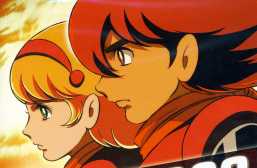
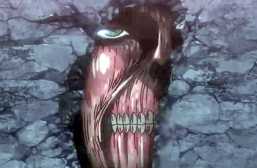
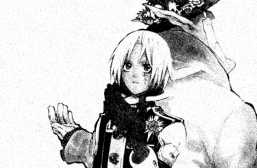
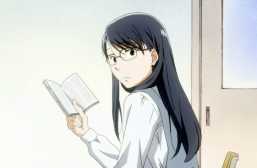
I really miss this manga. Luckily I’ve all 14 and 2 novels. Wish the creator would come back to this one day with an epilogue or anything about how every character turned out.
As far as I know there was an epilogue, although it didn’t go into much detail of the characters besides Keitaro and Naru
This brings back many memories. One of the greatest stories that even affected my way of life. Masterpiece.
I’m a big fan of the manga. Sailor Moon being my first series. This is my second. Very funny comic!
Great depth of knowledge, on a topic/genre I literally have no idea about. That’s the great thing about The Artifice really, I get exposed to texts beyond my personal scope. Nice job, I enjoyed your article!
Thanks Michelle I’m glad you enjoyed it 🙂
Great review. I thought the story went fast, almost too fast…
You know your Love Hina well. Although I would personally give credit for the harem genre to Tenchi Muyo, as it came before Love Hina. I do agree that certain character in Love Hina, like Narusegawa as you pointe out, served as a basis for characters to come. Amazing article Jordan.
Thanks. I have heard good things about Tenchi Muyo. Would you recommend the anime or manga?
I’ve admittedly only ever watched the anime but Love Hina will always hold a special place in my heart. It was one I watched going through puberty and enjoyed because, while it had the perverse nature of harem-genre, I was a romantic and I certainly rooted for Keitaro and Naru. That and I loved the theme song as well as the song “Sakura Saku” from the show. Splendid article, you’ve got me feeling nostalgic!
Love Hina was the first manga I have read and what really drew me into the series was the story plot and the character-development. I absolutely adored Naru and how she evolved through the story and Keitaro’s. I have noticed that most characters have and evolution in the artwork in regards to ‘attractiveness’ especially on Keitaro’s side. I really appreciated the artwork change (even if it was not intentional) because that tied with the story and the revealing character arcs in the main plot. The Love Hina series has all the comedy and romance to be worthy enough for a reader to take at least a shot at one chapter. Due to the risque and drug/alcohol elements, I suggest that the series is focused on older teens that are thirteen and over.
I’ve decided to explore past articles and happened to stumble upon this one! Love Hina was actually one of the first anime I watched that wasn’t popuralied in America.I would definitely say it stands up in time. 🙂 I know I still enjoy it as much at my age as I did when I was younger.
You know what is rough to watch when you’re older though? Rurouni Kenshin. The writing is actually that awful. The fights are great and the general idea is good but the dialogue and plot can be painful
Ha ha I never saw Rurouni Kenshin!! I’ve heard the OVAs are still good though.
Love Hina was the second or third manga I read when I was in high school. I have volumes 1-4 and seriously need to go back and read them again. I love this series. The characters are relatable in some aspects and they are just entertaining to read about!!
I’ve wondered for awhile after reading this in high school and kept seeing this trope. What is the Japanese obsession with horny losers who never act on opportunity and harems?
Love Hina still wins points for me by being generally funny, even with its age. Whilst it did popularize a terrible trend, it was also very tongue-in-cheek about it. That’s something I can’t say of most harem stories.
It should be noted that this genre includes a newer anime, and a natural conclusion. That would be Konosuba.
That was a very fascinating and informative article.
Love Hina was so inspiring to me that it motivated me to live in Japan and at least once pay a visit to hinata(hinata is actually the name of a real location in japan about an hours train journey from Tokyo central and yes it has an inn!!!) Now I can brag to every Love Hina fan I meet that I’ve been to the hinata hot spring inn!!!!